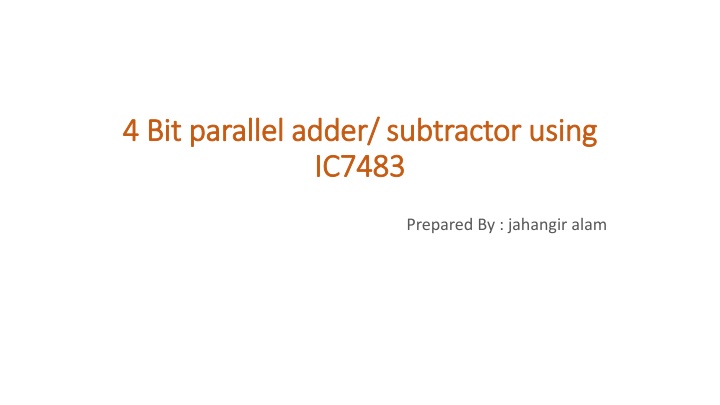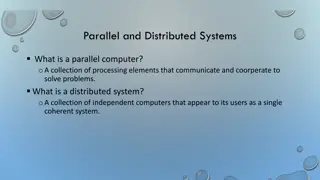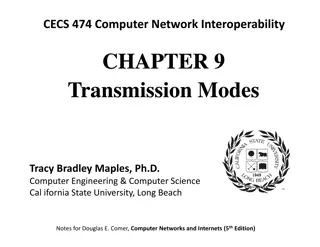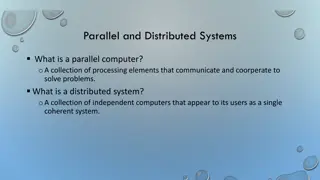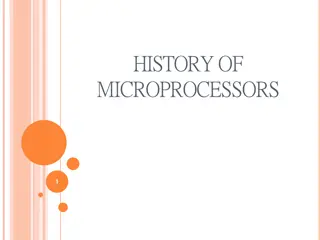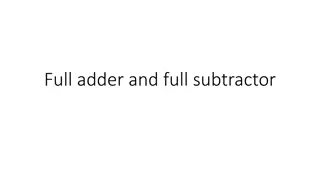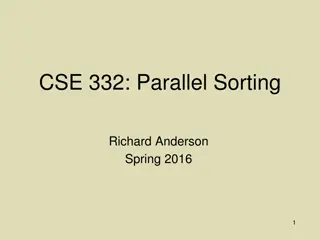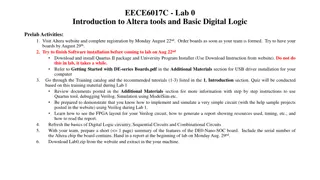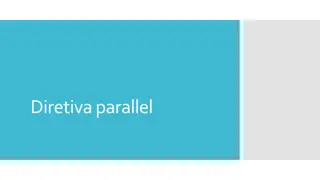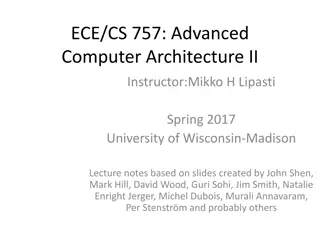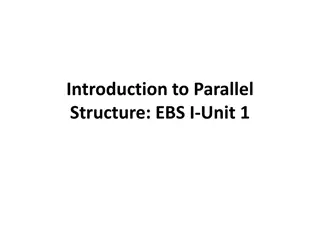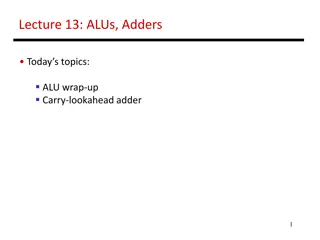4-Bit Parallel Adder/Subtractor IC7483
Explore the concept of 4-bit parallel adder/subtractor using IC7483, which is a digital circuit capable of performing arithmetic operations on binary numbers greater than one bit in length. Learn about the structure, operation, and implementation of parallel adders with cascaded full adders. Discover how to connect inputs, check outputs, and handle addition/subtraction using this circuit.
Download Presentation

Please find below an Image/Link to download the presentation.
The content on the website is provided AS IS for your information and personal use only. It may not be sold, licensed, or shared on other websites without obtaining consent from the author.If you encounter any issues during the download, it is possible that the publisher has removed the file from their server.
You are allowed to download the files provided on this website for personal or commercial use, subject to the condition that they are used lawfully. All files are the property of their respective owners.
The content on the website is provided AS IS for your information and personal use only. It may not be sold, licensed, or shared on other websites without obtaining consent from the author.
E N D
Presentation Transcript
4 Bit parallel adder/ 4 Bit parallel adder/ subtractor IC7483 IC7483 subtractor using using Prepared By : jahangir alam
Parallel Adder: Parallel Adder: Parallel Adder A single full adder performs the addition of two one bit numbers and an input carry. But a Parallel Adder is a digital circuit capable of finding the arithmetic sum of two binary numbers that is greater than one bit in length by operating on corresponding pairs of bits in parallel. It consists of full adders connected in a chain where the output carry from each full adder is connected to the carry input of the next higher order full adder in the chain. A n bit parallel adder requires n full adders to perform the operation. So for the two-bit number, two adders are needed while for four bit number, four adders are needed and so on. Parallel adders normally incorporate carry lookahead logic to ensure that carry propagation between subsequent stages of addition does not limit addition speed.
FOUR FOUR- -BIT BINARY PARALLEL ADDER BIT BINARY PARALLEL ADDER In the preceding session, we discussed how two binary bits can be added and the addition of two binary bits with a carry. In practical situations it is required to add two data each containing more than one bit. Two binary numbers each of n bits can be added by means of a full adder circuit. Consider the example that two 4-bit binary numbers B4B3B2B1and A4A3A2A1are to be added with a carry input C1. This can be done by cascading four full adder circuits as shown in Figure The least significant bits A1, B1, and C1are added to the produce sum output S1and carry output C2. Carry output C2is then added to the next significant bits A2and B2producing sum output S2and carry output C3. C3is then added to A3and B3and so on. Thus finally producing the four-bit sum output S4S3S2S1and final carry output Cout. Such type of four-bit binary adder is commercially available in an IC package.
Procedure: 1. Apply the inputs to A0 to A3 and B0 to B3. 2. Connect Cin to the Ground for addition.. 3. Check the output sum on the S0 to S3 and also C4. 4. For subtraction connect Cin to Vcc, Apply the B input through NOT gate, which gives the complement of B. 5. The truth table of adder and Subtractor are noted down.
4 bit Parallel 4 bit Parallel Subtractor Subtractor: :
Truth Table:Adder/Subtractor A3 A2 A1 A0 B3 B2 B1 B0 C4 S3 S2 S1 S0
